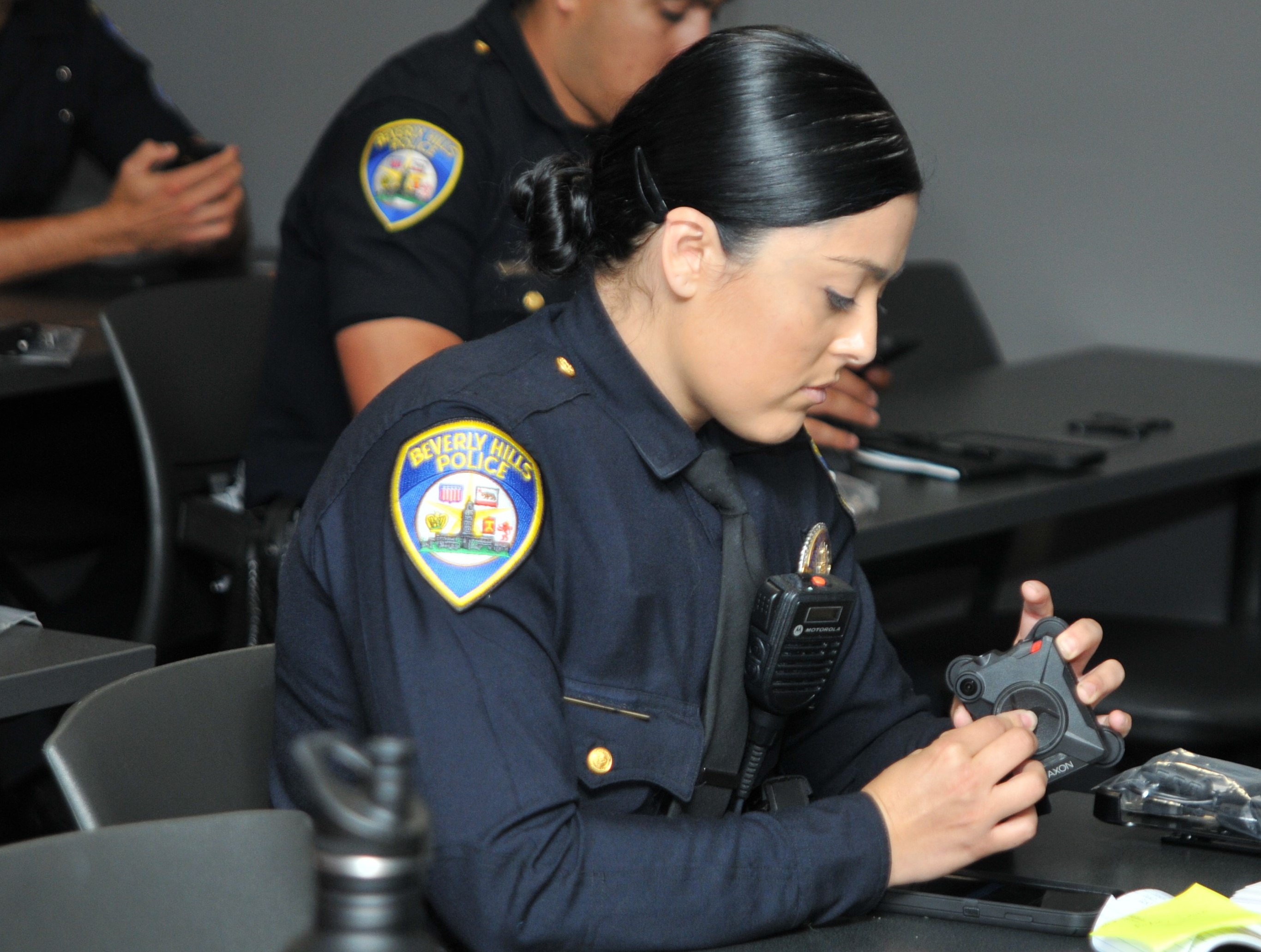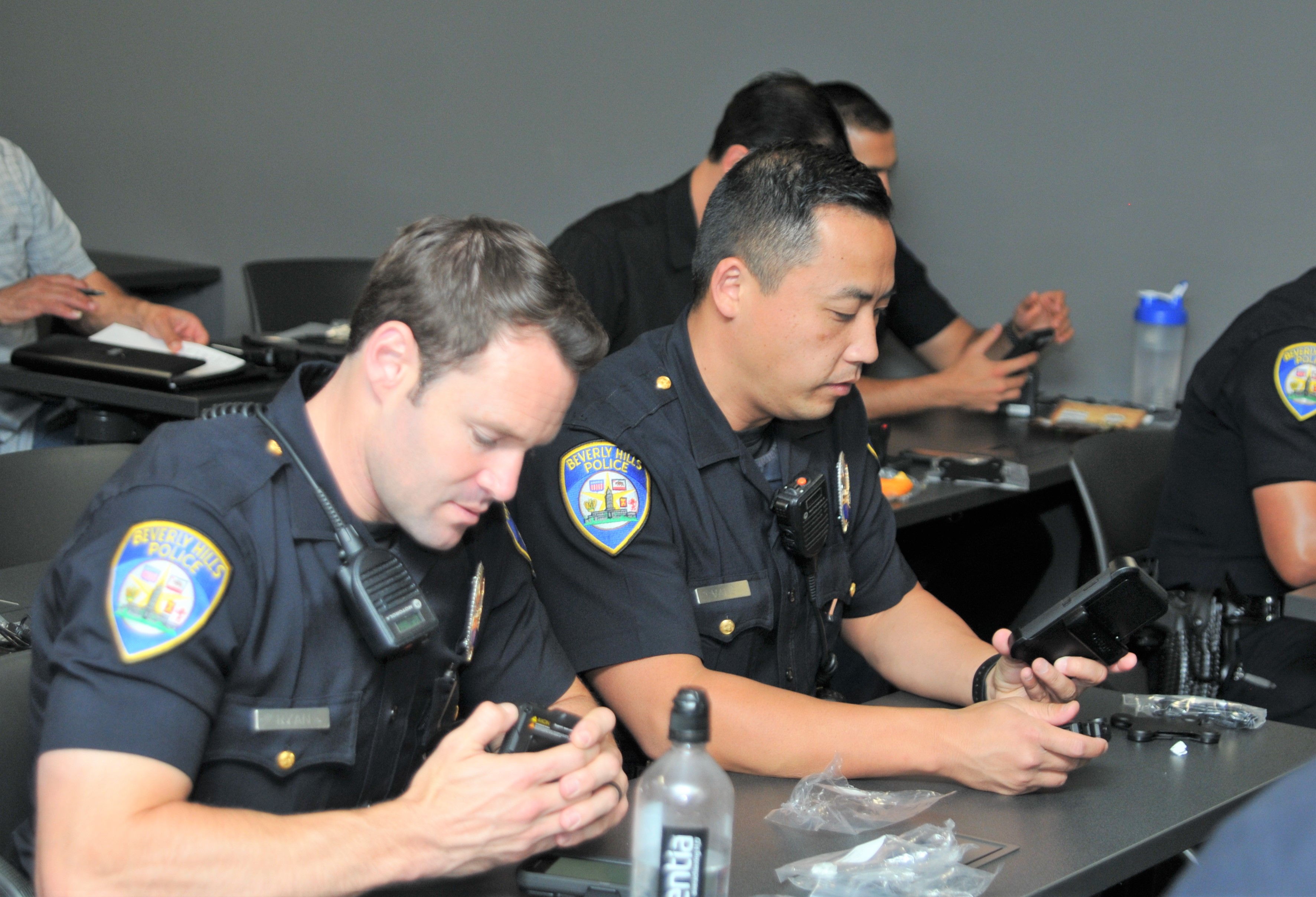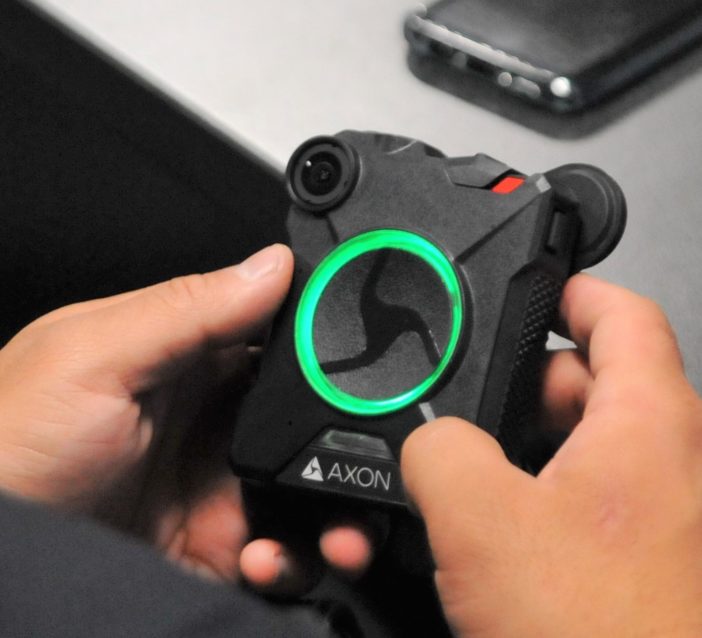After a series of four-hour training sessions, the Beverly Hills Police Department last week became the latest to require nearly all sworn officers to wear body-worn cameras — a welcomed move in a city devoted to safety and transparency.
“I think the body-worn cameras are the industry standard and an expectation for police agencies,” said Lt. Michael Hill, who is overseeing the training and use of the cameras, adding that most sworn personnel have a positive perception of the devices.

Acting Lieutenant Blake Nance attaches a body-worn camera to his uniform during a recent training session on the operation of the devices, which will record video and audio of police interactions with the public.
Photo by Lou Ponsi/Behind the Badge
For nearly half of the 15,000-plus law enforcement agencies in the U.S., body worn cameras became standard issue by 2016, according to a November 2018 report published by the U.S. Department of Justice.
The cameras capture video and audio of interactions between officers and the public in real time. Early research shows the cameras reduce conflicts, are useful in training, and provide helpful evidence to support public safety.
Officers have been responding to the new cameras positively. Shortly after he’d been issued a camera, one officer was able to record a felony car stop involving a stolen vehicle, the lieutenant said.
“He said, ‘I got it all on video,’” Hill said.

Beverly Hills Police Officer Francesca Fasullo examines her body-worn camera during a training session on how to use the devices. All sworn Beverly Hills officers from the rank of lieutenant on down are now wearing the cameras.
Photo by Lou Ponsi/Behind the Badge
Another officer used the camera’s photo feature to take dozens of photos of what Hill described as a “complicated arrest.”
“He took like 50 photos,” Hill said. “He said it was simple. Everything has been positive so far.”
Beverly Hills P.D. began researching body worn cameras, engaging in a three-phase testing period that involved 11 officers trying eight different types of cameras. Officers assessed the ease of operation, ease of downloading video, battery life, and evidence security.

All Beverly Hills police officers from the rank of lieutenant on down are now wearing body worn cameras.
Photo by Lou Ponsi/Behind the Badge
After narrowing the field down to two choices, the department initiated a second phase of testing. A third phase of testing involved the department’s final choice, the Axon 2. In February, the Beverly Hills City Council unanimously approved the purchase of 175 body-worn cameras.
The cameras allow officers to initiate video capture, take still photos, and integrate data from the department’s dispatch system. In addition to the body-worn cameras, officers will continue to use their dash cam systems.

Beverly Hills police officers are now equipped with Axon body worn cameras to record contacts with the public.
Photo by Lou Ponsi/Behind the Badge
Before rolling out the cameras, the department met with the City Attorney, consulted with the Beverly Hills Police Officers Association and sought feedback from officers and community members in order to craft a policy regarding what types of contacts should be recorded. The police department wants to be sensitive when interviewing certain types of crime victims.
“The first thing is a good policy, so that the officers feel comfortable and supervisors feel comfortable with it,” Hill said. “And the district attorneys are expecting videos for filing.”
It’s important to note that the cameras have limitations, as they are worn at chest level and don’t necessarily pick up everything an officer sees. Sometimes the cameras view might be obstructed. And the cameras don’t pick up light as well as the human eye.
“It’s very helpful on subjective things like a DUI,” Hill said. “You can write it down in your report and say he was slurring his words, but when you play it, it’s clear.”
 Behind the Badge
Behind the Badge



